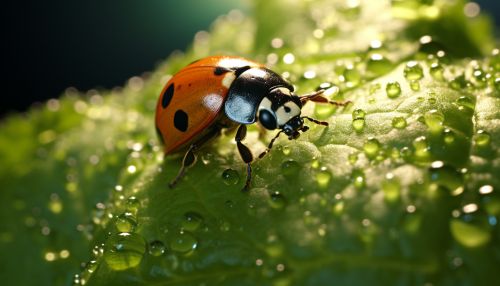Biological pest control
Introduction
Biological pest control is a method of controlling pests such as insects, mites, weeds and plant diseases using other organisms. It relies on predation, parasitism, herbivory, or other natural mechanisms, but typically also involves an active human management role. It can be an important component of integrated pest management (IPM) programs.


History and Overview
The concept of biological pest control has its roots in ancient times. The first recorded use of an insect species to control pests comes from China, where ants were used to control pests of citrus trees. The practice was later refined and became a cornerstone of pest control in many cultures.
In the modern era, biological pest control has become a focus of scientific research and application. It is now considered a key part of sustainable agriculture and is used in both commercial and home gardening. The use of biological pest control methods has been driven by increasing concerns about the environmental and health impacts of chemical pesticides.
Types of Biological Pest Control
There are three basic types of biological pest control strategies: importation (or classical biological control), augmentation and conservation.
Importation
Importation, or classical biological control, involves the introduction of a pest's natural enemies to a new locale where they do not occur naturally. This is usually done by government authorities. This method has been used to control pests in agriculture, forestry, and the control of invasive species.
Augmentation
Augmentation involves the supplemental release of natural enemies, boosting the naturally occurring population. Two types of augmentation are recognized: Inundative release, where large numbers are released in the hope of rapidly reducing a damaging pest population, and inoculative release, where a smaller number of the natural enemies are released at intervals to allow them to reproduce, in the hope of setting up longer-term control, and thus keeping the pest population in check.
Conservation
Conservation of natural enemies is perhaps the most effective and readily available biological control practice available to home gardeners and commercial growers. It involves measures to maintain natural enemies through provision of essential requirements such as food and shelter, or by avoiding their accidental killing.
Benefits and Limitations
Biological pest control can provide a number of benefits. It can reduce the need for chemical pesticides, which can have harmful effects on the environment and human health. It can also be a cost-effective method of pest control, particularly in the long term. Furthermore, it can help to maintain biodiversity in agricultural systems.
However, there are also limitations and challenges associated with biological pest control. It can take time for the natural enemies to reduce pest populations, and in some cases, the natural enemies may not be effective. There can also be risks associated with introducing non-native species into new environments.
Future Directions
With increasing awareness of the environmental and health impacts of chemical pesticides, there is growing interest in further developing and implementing biological pest control methods. Research is ongoing to better understand the effectiveness of different natural enemies, and to develop new methods for their use in pest control.
